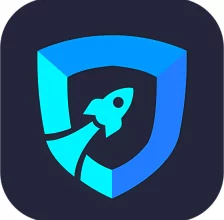A Complete Guide to Mobile applications development

Introduction
Mobile application development is the set of processes and procedures involved in writing software for small, wireless computing devices, such as smart phones and other hand-held devices.
Similar to web application development, conventional software development is the foundation of mobile applications development. However, one important distinction is that mobile applications are frequently created especially to make use of a given mobile device’s special characteristics. For instance, an application for gaming may leverage the accelerometer on an iPhone, while a mobile health app could leverage the temperature sensor on a wristwatch.
Read Also: 314159u
Types of mobile applications development
Developing a native app was the only way to guarantee that it would run well on any device in the early days of mobile applications development. This required writing fresh code especially for the unique CPU in each device. Most produced mobile applications these days are device-agnostic.
In the past, there was little to no code that could be reused from the original development project when an app required being cross-platform and operating on different operating systems (OSes).
In essence, every device needed an own code base and mobile applications development project baddiehub.com. The key feature of contemporary cross-platform solutions is their seamless integration with application lifecycle management systems like Jenkins. These tools allow code to be shared between projects using common languages like C# and JavaScript.
This makes it possible for developers to create progressive mobile applications development (PWAs), Google Android, and Apple iOS using a single codebase. PWAs are designed to leverage the built-in capabilities of mobile devices, eliminating the need for the user to visit an app store, make a purchase, and download software locally.
Instead than requiring e-commerce businesses to create native applications for several mobile OSes, a PWA may be found with a search engine query and accessible instantly through a browser.
PWA material is gradually downloaded, much like YouTube videos, giving users a more favorable experience than traditional websites with responsive design. Instant mobile applications are another name for progressive mobile applications development.
Before developing a mobile applications development, you need to determine which type you’ll be creating. Here’s a breakdown of several types of mobile applications development technologies with information about each.
1. Native applications
2. Hybrid apps
3. Progressive web apps
4. Encapsulated apps
5. Frameworks and libraries
What to identify before developing a mobile applications development
There are a few considerations to go over before investing time and resources into creating a mobile app. While developing an app is pretty straightforward, planning a strategic digital solution can be complicated.
1. Define your target audience
2. Perform competitor research
3. Decide on your operating system
4. Incubate your app idea
5. Plan your app design and security
Develop the Concept and Make a Plan
you need to generate ideas before you can begin mobile applications development. It’s possible that some of you already have a fundamental notion. Some may be making a fresh start.
Here are some helpful starter questions that you should be asking yourself:
1.What goals do you have for your mo mobile applications development?
2. What are the objectives of your app?
3. Which problem—or problems—will users of your program be able to solve?
4. What functionalities will your app have?
5. What is your willingness to invest financially?
6. How are you going to create the app? (An agency, in-house group, app developer, etc.)
6. It’s simple to over think things when brainstorming. However, it’s critical to adhere to the essential functions of the app. Put an end to pointless extras and “nice-to-haves” that take you away from the main purpose of the app.
Read Also: how i sleep at night knowing l’m failing all my cl – tymoff
How to develop an app
Building an app isn’t something that can be done overnight. There are many steps your development team should take to ensure your app launches properly. Explore our easy 12-step guide to get started on developing a new mobile applications development:
· Identify an app idea
· Conduct competitive research
· Outline core features
· Create mockups
· Plan app security
· Begin coding
· Perform multiple tests
· Gather and implement user feedback
· Launch in the app store
· Market your app
· Continue to push new features and updates
· Establish a development team
Build Your UX Design
The mobile app design process is another crucial part of the process. Start thinking about how your app will look and feel. Start drawing some sketches and create wireframes to see how the app will work.
Focusing on the user experience must be a top priority. You need to make sure the user interface is seamless and easy to navigate.
- Create a storyboard or roadmap to demonstrate connections between each screen.
- Think about the differences in how people will use your app compared to a mobile website (app development and web development are not the same).
- User experience must be your top priority.
Mobile applications development
Now it’s time to actually create the app. This includes all of the back-end technology, APIs, and front-end building. Here’s what you need to do:
- Choose your development method.
- Assemble your development team.
- Appoint a project manager.
- Establish a timeline with milestones and goals.
- Be agile, and prepare for changes along the way.
Testing
Before your app goes live, you need to make sure that it actually works. App testing is when you’ll find bugs, glitches, and anything else that needs to be cleaned up before it gets put in the hands of your customers omgblog.
In summary
The process of creating a mobile app has several facets to explore. But the user experience must always come first when developing native or cross-platform apps.
The core use case of your app must be satisfied by its functionality, and its interactive elements must be simple to use.
When it comes to app creation, there are countless options. Your budget, objectives, schedule, technical proficiency, and app complexity will all determine which solution is ideal for you.





